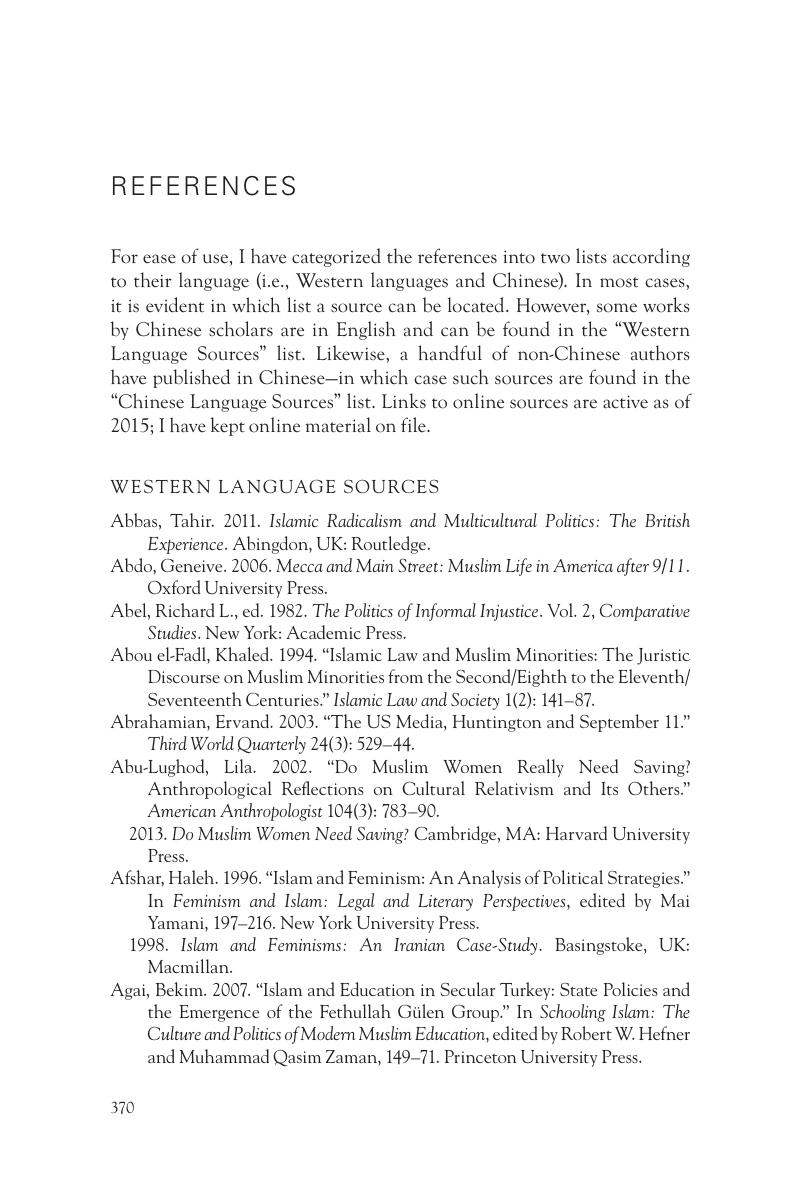Book contents
- China and Islam
- Cambridge Studies in Law and Society
- China and Islam
- Copyright page
- Dedication
- Dedication
- Contents
- Figures
- Tables
- Acknowledgments
- Abbreviations
- A note on language
- Maps
- Introduction
- 1 History, the Chinese state, and Islamic law
- 2 Linxia at the crossroads
- 3 Ritual lawfare
- 4 Learning the law
- 5 Wedding laws
- 6 Moral economies
- 7 Procedural justice
- Conclusion
- Glossary
- References
- Index
- Books in the Series
- References
References
Published online by Cambridge University Press: 05 May 2016
- China and Islam
- Cambridge Studies in Law and Society
- China and Islam
- Copyright page
- Dedication
- Dedication
- Contents
- Figures
- Tables
- Acknowledgments
- Abbreviations
- A note on language
- Maps
- Introduction
- 1 History, the Chinese state, and Islamic law
- 2 Linxia at the crossroads
- 3 Ritual lawfare
- 4 Learning the law
- 5 Wedding laws
- 6 Moral economies
- 7 Procedural justice
- Conclusion
- Glossary
- References
- Index
- Books in the Series
- References
Summary

- Type
- Chapter
- Information
- China and IslamThe Prophet, the Party, and Law, pp. 370 - 435Publisher: Cambridge University PressPrint publication year: 2016



